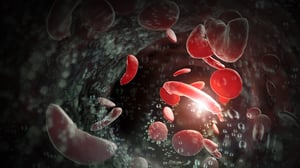The New England Journal of Medicine has reported the results of an important study by an international team. Genetic engineering techniques are employed to repair diseased blood stem cells.
There is real, renewed hope for sufferers of beta thalassaemia, or Mediterranean anaemia, following the success of a gene therapy called beti-cel, involving researchers from Italy, France, Germany, the U.K., the U.S.A. and Thailand. Gene therapy employs sophisticated techniques to alter defective sections of the genetic code in diseased cells.
The results of phase 3 of the trial, the one that precedes an eventual go-head from health authorities, have just been published in one of the most important international biomedical journals: the New England Journal of Medicine. The study involved nine hospitals worldwide, including the Bambino Gesù Children's Hospital in Rome under the supervision of Professor Franco Locatelli, the main author of the study.
In beta thalassaemia, which is hereditary, there is an insufficient synthesis of haemoglobin (the blood protein to which oxygen binds). This is why patients with the most serious forms of the disease require regular transfusions (usually every month) exposing them to the risk of infection and an excess of iron in the liver, which can have serious consequences. This is why researchers have long been trying to understand how to correct the genetic defect that causes haemoglobin deficiencies. Now it appears there has been a breakthrough.
A virus as a 'vehicle’
Researchers decided to use the patient's own stem cells (known as haematopoietic cells), extracted from the patient's blood and 'infected' with a laboratory-modified virus. This virus entered the cells, carrying corrected copies of the defective thalassaemia gene and replaced the malfunctioning ones. The stem cells with the correct DNA were then re-infused into the patient after a few cycles of chemotherapy to remove as many of the defective cells as possible and make it easier for the modified ones to take hold.
According to the New England Journal of Medicine, 20 of the 22 patients treated (91% of the total), aged between 4 and 34 who were studied for an average of just under 30 months, achieved the most successful result: approximately one month after treatment, they no longer needed transfusions. This was also the case for 6 of the 7 patients under 12 years of age.
Furthermore, a year after treatment the average haemoglobin concentration was 8.7 grams per decilitre. This is lower than with transfusions (which average around 11 grams per decilitre) but still enough to say goodbye to the need for transfusions permanently.
As previously mentioned, the procedure requires pre-treatment with chemotherapy. This lasts one month on average and is almost always performed on an in-patient basis, to monitor the situation and protect the patient from the risk of infection. So it is normal that there may be some toxicity. However, among the patients tested, only four had a relatively significant platelet deficiency, and only one was classed as severe. On the other hand, no cases of cancer were caused by the procedure (a very real risk with this type of therapy).
These figures therefore make it possible to say that beti-cel (short for Betibeglogene Autotemcel) gene therapy is safe and effective and may improve the quality of life in almost all patients, including paediatric patients.
Awaiting the final green light
The Bluebird Bio company, which funded the study, has already submitted a dossier to the US Food and Drug Administration (the American body that regulates the experimentation and sale of medicines) for its final approval and expects to be given the go-ahead by next summer. If this is the case, the therapy could move from the testing phase to be applied directly on a large scale in hospitals.

